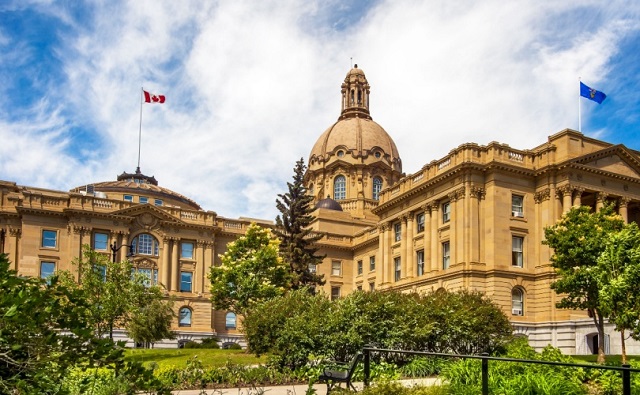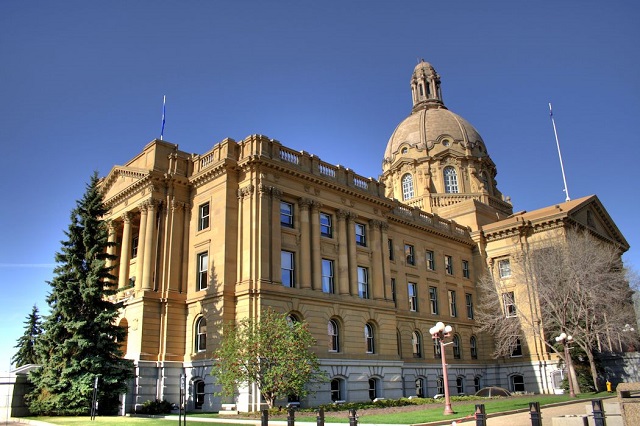Business
How the EU could combine carbon passports, digital ID, and social credit for every product
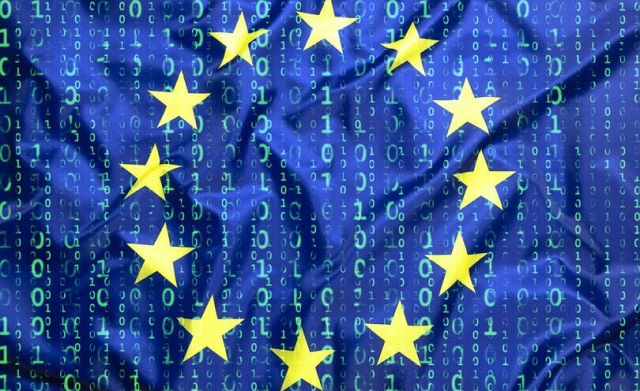
From LifeSiteNews
The European Union is going deep with its plans to introduce digital IDs across industries. Tying a form of digital ID to all products would make the introduction of carbon social credit scores easier to implement.
The concept of “carbon passports,” proposed as a measure to combat climate change, has, for a while now, raised significant concerns regarding civil liberties. These passports are designed to track an individual’s carbon footprint, including travel, energy consumption, and lifestyle choices. While their intention is to encourage environmentally friendly behaviors, they present a substantial threat to personal privacy by enabling continuous monitoring of personal activities.
This intrusion into privacy is not the only issue; carbon passports could potentially lead to discriminatory practices. Those in lower-income brackets, who often have limited access to green alternatives, might find themselves unfairly penalized. This system risks exacerbating social inequalities by disproportionately affecting those less financially equipped to make eco-friendly choices.
Furthermore, carbon passports could restrict movement and personal autonomy. Limiting travel or certain activities based on carbon usage might create a situation where only the wealthy, who can afford carbon offsets or sustainable options, maintain their freedom. This scenario paints a disturbing picture of environmental responsibility being accessible only to those with financial means.

Another concern is the centralization of power in the hands of entities controlling the carbon data. This centralization could lead to a slippery slope where tools designed for climate control evolve into instruments of more oppressive surveillance and control. The balance between addressing environmental concerns and maintaining civil liberties is delicate and crucial.
As part of the push towards carbon passports, a new idea – tying a form of digital ID to all products is also being pushed. It makes the introduction of carbon social credit scores easier to implement.
The European Union is going deep with its plans to introduce digital IDs (in this case, “digital product passports, DDPs”) across industries. DDPs specifically refer to apparel, accessories and electronics.
Brands are now starting to work on integrating the tech – that the European Commission says is necessary for the greater good of citizens, such as meeting “sustainability goals” – the so-called green deal, carbon emissions, all the things – and then there’s access to services and contactless payment.

Critics, on the other hand, say it’s simply yet another way to abuse consumers by harvesting even more of their data. The opponents’ fears appear to rely on solid facts since some of the data collected thanks to the EU’s proposed scheme will profile people based on their behavior, preferences, and even the value of their “resale profile.”
The deadline mentioned is as early as 2026 – that’s how soon brands would have to incorporate digital passports into their products.
And, don’t expect any resistance from brands. Reports are saying that they are working hard to meet the deadline of meeting what is referred to as the European Commission’s “real-world uses for digital identities.”
READ: EU claims digital ID wallet will be voluntary. India said the same before it became mandatory
On the side of the fashion industry, there will be the need to let the EU know – no longer voluntarily – about how they manufacture items, organize their supply chains, and the materials used.
Well, don’t expect brands to only implement the tech to make the EU feel good about itself. “Brands currently testing the technology are figuring out ways for it to collect customer data and add perks beyond the point of purchase,” writes Vogue Business.
Already trying to go a step above linking physical items with digital identity – as is the case with QR and NFC – and meet EU goals are the likes of Balenciaga, RealReal, and Boss, the article mentions.

And unlike that “old tech” that was there mostly to facilitate and protect transactions, manufacturers and customers, Mojito CEO Raakhee Miller had this interesting take on what’s referred to as the upcoming, “physical first” method: it “not only enhances the product’s value,” said Miller, “but also deepens consumer engagement.”
So, how deeply does the EU – and brands following its diktat – want to “engage” customers, other than people handing over money for a product they buy? This is where what’s basically data harvesting and mining comes into play, even if it is explained in fancy (and unsurprisingly, equally meaningless) terms like “phygital goods” and “metaverse approach.”
But, so to speak, the proof is in the word salad: the point is to have services and use cases “more anchored in client needs.” And clearly, to know what those needs are, one must first better know the client. Meaning, beyond what the client is currently comfortable sharing with multinational conglomerates.
Can’t we all just buy what we want, and move along? Please?
Not so fast, the EU says, and people like Vestiaire Collective VP of Partnerships Laura Escure explain it by no less than what might seem to many as basically questioning the customers’ cognitive abilities.
“The barriers around Web3 were not helping consumers to think thoroughly about luxury,” Escure is quoted.
READ: World Bank president advocates global digital ID scheme at tech summit
And did you know that if you dish out a lot of money on a luxury product, there’s a whole “story” behind it – beside the one in your bank statement? That’s how Aura Blockchain Consortium CEO Romain Carrere wants you to think about the situation.
“We believe in a future where every customer feels connected to the story behind their products, and the DPP is the key to unlocking that narrative. It’s not just a digital passport, it’s a journey of trust and empowerment for every consumer,” said Carrere.
But mostly, it would seem, it’s a narrative. There to empower itself, and those in positions of power, rather than the customer.
Back in EU’s bureaucracy, the digital product passport proposals first saw the light of day in the spring of 2022, naturally, as “sustainability” enhancing mechanisms related to products, and about a year later, this was officially presented on the European Commission website as a way to share key information about a product.
The information would be shared “across all the relevant economic actors,” a press release said in May 2023. Things are happening in this space under the Proposal for Ecodesign for Sustainable Products Regulation (ESPR).
The EU claims its goals are to boost what it calls circular economy, material and energy efficiency, and extend product lifetimes, as well as the way waste from those products is eventually handled.
The bloc also declares some grand ambitions here – like creating new business opportunities – “based on improved data access,” though.
And the EU is not above putting down consumers either, while at once working to elevate the level of data scrounged off of them. The DDP scheme, the Commission says, will “help consumers in making sustainable choices.”
And, for now – “allow authorities to verify compliance with legal obligations.”
Reprinted with permission from Reclaim The Net.
2025 Federal Election
Alcohol tax and MP pay hike tomorrow (April 1)
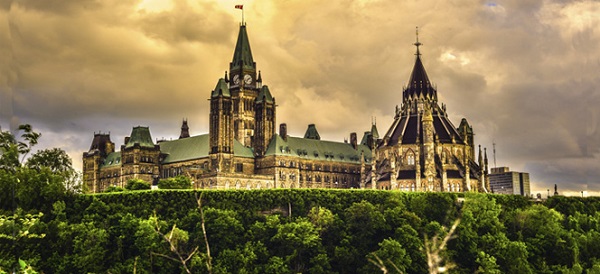
The Canadian Taxpayers Federation is calling on all party leaders to stop a pair of bad policies that are scheduled to happen automatically on April 1: pay raises for members Parliament and another alcohol tax increase.
“Party leaders owe taxpayers answers to these two questions: Why do you think you deserve a pay raise and why should Canadians pay higher taxes on beer and wine?” said Franco Terrazzano, CTF Federal Director. “Politicians don’t deserve a raise while millions of Canadians are struggling.
“And the last thing Canadians need is another tax hike when they pour a cold one or uncork a bottle with that special someone.”
MPs give themselves pay raises each year on April 1, based on the average annual increase in union contracts with corporations with 500 or more employees.
The CTF estimates tomorrow’s pay raise will amount to an extra $6,200 for backbench MPs, $9,200 for ministers and $12,400 for the prime minister, based on contract data published by the federal government.
After tomorrow’s pay raise, backbench MPs will receive a $209,300 annual salary, according to CTF estimates. A minister will collect $309,100 and the prime minister will take home $418,600.
Meanwhile, the alcohol escalator automatically increases excise taxes on beer, wine and spirits every year on April 1, without a vote in Parliament. Alcohol taxes will increase by two per cent tomorrow, costing taxpayers about $40 million this year, according to Beer Canada estimates.
The alcohol escalator tax has cost taxpayers more than $900 million since it was imposed in 2017, according to Beer Canada estimates.
“Politicians are padding their pockets on the same day they’re raising beer taxes and that’s wrong,” Terrazzano said. “If party leaders want to prove they care about taxpayers, they should stop the MP pay raises.
“And if party leaders care about giving Canadian brewers, distillers and wineries a fighting chance against tariffs, it’s time to stop hitting them with alcohol tax hikes year after year.”
The CTF released Leger polling showing 79 per cent of Canadians oppose tomorrow’s MP pay raise.
2025 Federal Election
Poilievre To Create ‘Canada First’ National Energy Corridor

From Conservative Party Communications
Poilievre will create the ‘Canada First’ National Energy Corridor to rapidly approve & build the infrastructure we need to end our energy dependence on America so we can stand up to Trump from a position of strength.
Conservative Leader Pierre Poilievre announced today he will create a ‘Canada First’ National Energy Corridor to fast-track approvals for transmission lines, railways, pipelines, and other critical infrastructure across Canada in a pre-approved transport corridor entirely within Canada, transporting our resources within Canada and to the world while bypassing the United States. It will bring billions of dollars of new investment into Canada’s economy, create powerful paycheques for Canadian workers, and restore our economic independence.
“After the Lost Liberal decade, Canada is poorer, weaker, and more dependent on the United States than ever before,” said Poilievre. “My ‘Canada First National Energy Corridor’ will enable us to quickly build the infrastructure we need to strengthen our country so we can stand on our own two feet and stand up to the Americans.”
In the corridor, all levels of government will provide legally binding commitments to approve projects. This means investors will no longer face the endless regulatory limbo that has made Canadians poorer. First Nations will be involved from the outset, ensuring that economic benefits flow directly to them and that their approval is secured before any money is spent.
Between 2015 and 2020, Canada cancelled 16 major energy projects, resulting in a $176 billion hit to our economy. The Liberals killed the Energy East pipeline and passed Bill C-69, the “No-New-Pipelines” law, which makes it all but impossible to build the pipelines and energy infrastructure we need to strengthen the Canadian economy. And now, the PBO projects that the ‘Carney cap’ on Canadian energy will reduce oil and gas production by nearly 5%, slash GDP by $20.5 billion annually, and eliminate 54,400 full-time jobs by 2032. An average mine opening lead time is now nearly 18 years—23% longer than Australia and 38% longer than the US. As a result of the Lost Liberal Decade, Canada now ranks 23rd in the World Bank’s Ease of Doing Business Index for 2024, a seven-place drop since 2015.
“In 2024, Canada exported 98% of its crude oil to the United States. This leaves us too dependent on the Americans,” said Poilievre. “Our Canada First National Energy Corridor will get us out from under America’s thumb and enable us to build the infrastructure we need to sell our natural resources to new markets, bring home jobs and dollars, and make us sovereign and self-reliant to stand up to Trump from a position of strength.”
Mark Carney’s economic advice to Justin Trudeau made Canada weaker while he and his rich friends made out like bandits. While he advised Trudeau to cancel Canadian energy projects, his own company spent billions on pipelines in South America and the Middle East. And unlike our competitors Australia and America, which work with builders to get projects approved, Mark Carney and Steven Guilbeault’s radical “keep-it-in-the-ground” ideology has blocked development, killed jobs, and left Canada dependent on foreign imports.
“The choice is clear: a fourth Liberal term that will keep our resources in the ground and keep us weak and vulnerable to Trump’s threats, or a strong new Conservative government that will approve projects, build an economic fortress, bring jobs and dollars home, and put Canada First—For a Change.”
-

 Business1 day ago
Business1 day agoCuba has lost 24% of it’s population to emigration in the last 4 years
-

 2025 Federal Election24 hours ago
2025 Federal Election24 hours ago2025 Federal Election Interference from China! Carney Pressed to Remove Liberal MP Over CCP Bounty Remark
-

 Uncategorized23 hours ago
Uncategorized23 hours agoPoilievre on 2025 Election Interference – Carney sill hasn’t fired Liberal MP in Chinese election interference scandal
-

 Business2 days ago
Business2 days agoTariff-driven increase of U.S. manufacturing investment would face dearth of workers
-

 Education2 days ago
Education2 days agoOur Kids Are Struggling To Read. Phonics Is The Easy Fix
-
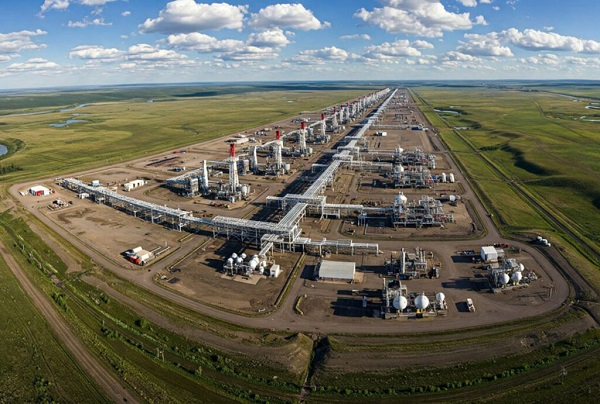
 Economy2 days ago
Economy2 days agoClearing the Path: Why Canada Needs Energy Corridors to Compete
-

 International1 day ago
International1 day agoTrump signs executive order to make Washington D.C. “safe and beautiful”
-

 Media1 day ago
Media1 day agoTop Five Huge Stories the Media Buried This Week








